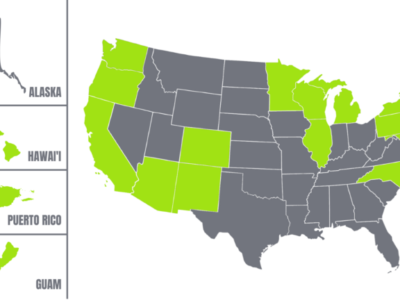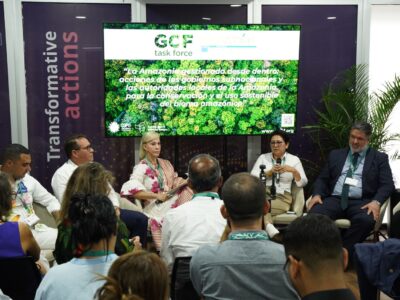California
Trump’s Offshore Wind Ban vs. China’s Wind Juggernaut
Why is the Trump administration kneecapping the U.S. offshore wind industry while China becomes a global giant?
This January, when I was in Beijing for a workshop at Tsinghua University on offshore wind, presentation after presentation from Chinese experts revealed just how China has become an absolute juggernaut in offshore wind. Professors from the Chinese Academy of Social Sciences and Tsinghua walked us through the governance structure — state planning, targets, industrial …
Continue reading “Trump’s Offshore Wind Ban vs. China’s Wind Juggernaut”
CONTINUE READINGThe Green-State Playbook
Here are five ways states can save climate policy despite Trump.
Trump’s election is a body blow to U.S. climate policy, but there are ways that those states can fight Trump and move forward on their own plans. To cut to the chase, here are five key strategies for green states — starting with lawsuits against the Trump Administration, which were highly successful in Trump’s first term.
CONTINUE READINGCollecting useful data on NEPA
A 2024 study falls fall short in shedding light on the impacts of NEPA litigation
As I’ve recently posted, permitting reform is (appropriately) in the news right now. That means there’s also a reason for various think tanks, NGOs, academics, and others to release studies that might inform the policy debate. One such study from 2024 that has gotten some coverage on social media recently is a report by the …
Continue reading “Collecting useful data on NEPA”
CONTINUE READINGHonoring Michael Zischke (1954-2025)
A Force in the CEQA World
Michael Zischke was a talented and award-winning land use and environmental lawyer, Mike was widely recognized for his extensive expertise in California Environmental Quality Act (CEQA) litigation and compliance.
CONTINUE READINGWhat Will 2025 Bring in Global Climate Finance?
Last year, international negotiations continued to disappoint on global climate policy, forests, and finance. This year, subnational governments must continue to lead.
As they have for many years, nations came together in 2024 at various climate-related events to push for a brighter future. From the 16th Conference of the Parties (COP) to the Convention on Biological Diversity in Cali, Colombia in October 2024, followed immediately by COP29 to the United Nations Framework Convention on Climate Change (UNFCCC) …
Continue reading “What Will 2025 Bring in Global Climate Finance?”
CONTINUE READINGClimate Takeaways from Newsom’s Budget Proposal
The Governor’s proposed 2025-26 budget would tap the recent voter-approved climate bond and seek new emergency funds.
For more than a month, California has worked at “Trump-proofing” the State budget. Now you could say the Governor is looking to fire-proof it too. On Friday, as wildfires continued to rage across Southern California, officials from the California Department of Finance presented the Governor’s proposed 2025-26 budget. Earlier in the week, the Governor—who has …
Continue reading “Climate Takeaways from Newsom’s Budget Proposal”
CONTINUE READINGHuge Snub for Big Oil at the Supreme Court
Oil companies failed to persuade the justices to shield them from the growing number of state lawsuits seeking damages for the harms caused by climate change.
Big Oil has failed to persuade the U.S. Supreme Court to shield it from numerous state climate lawsuits filed across the country seeking damages for the harms caused by climate change — harms like the historic, supercharged urban fires burning in Los Angeles. The justices held a conference on Friday, January 10 to determine whether …
Continue reading “Huge Snub for Big Oil at the Supreme Court”
CONTINUE READINGThe Fires in Los Angeles
Wildfire policy and the tragic fires in Southern California?
National attention is (rightly) focused on the terrible fire situation in Los Angeles. At the moment, the top priority is supporting first responders who are trying to control the fires, prevent more damage, and help the people who have lost homes and loved ones. There is (of course) a bunch of chatter on social media …
Continue reading “The Fires in Los Angeles”
CONTINUE READINGLA Fires and the Climate Connection
New UCLA research connects the dots between the climate crisis and the supercharged LA wildfires. “Hydroclimate whiplash” means worse floods, droughts, and fires.
Like millions of Angelenos, I’ve been staying indoors and off the roads, glued to the Watch Duty app, radio, and TV coverage as LA is engulfed by these historic fires. The last 48 hours of coverage has focused, understandably, on the firefight and immediate devastation. Now, it’s time to start hearing about the climate connection, …
Continue reading “LA Fires and the Climate Connection”
CONTINUE READINGA Crisis in Climate Communications
Deadly windstorms, wildfires, and hurricanes constitute something more horrific than just “climate change.”
What’s best for communicating urgency: phrases like “global warming” and “climate change” or “climate crisis” and “climate emergency”? What do audiences take away from these semantic choices? Does it matter what words we use? What about when the entire nation is watching a series of wildfires engulf Los Angeles, fueled by unusually dry vegetation during …
Continue reading “A Crisis in Climate Communications”
CONTINUE READING









